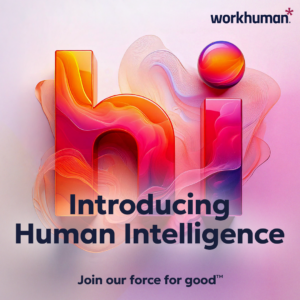
The Upskilling Imperative: Elevating Talent to Thrive in the Modern Workplace
Sponsored by Workhuman. In today’s rapidly evolving workplace, upskilling isn’t just an advantage — it’s a necessity. Employees who learn new skills are more engaged,

Sponsored by Workhuman. In today’s rapidly evolving workplace, upskilling isn’t just an advantage — it’s a necessity. Employees who learn new skills are more engaged,

No matter your role or position in an organization, you may have experienced being micromanaged at one point or another. We all know it’s never

For more than two decades, we have lived with this sensibility and reality that we allocate most, if not all, of our corporate attention to

Sponsored by Firstup. We’ve all encountered employee onboarding nightmares. Perhaps your manager forgot your start date. Or maybe the tools and technology assigned to you didn’t

In the modern business world, success isn’t just about profitability. It’s also about sustainability. And at the heart of every sustainable business lies organizational health.

Organizations are always changing. This has been especially important since the pandemic arrived in 2020. At first, HR and business leaders were flying blind, reacting

In today’s uncertain business and economic environment, employee mental health challenges are on the rise. In response, workforce planning is emerging as a crucial strategy

Although I have a full-time job, recently I’ve started to identify with solopreneurs. Why? Well, for eight years, I’ve also been spearheading an annual Children’s

The modern workplace has changed dramatically — along with the composition of today’s workforce. An increasing number of companies now rely on a mix of

Managing a company has always been complicated. But the recent explosion of remote and hybrid work is making things infinitely more complex, especially when it

We publish a lot of articles at TalentCulture by terrific HR practitioners, innovators, and thought leaders. In fact, we’ve been sharing useful ideas from diverse

As 2024 begins, employers are eager to move beyond “The Great Resignation” of 2022 and last year’s subsequent “Great Gloom.” But what exactly are organizations

We’re facing turbulent times in the world of work. And not surprisingly, the language we use to describe modern work life is changing just as

Productivity metrics were essential 100 years ago, during the manufacturing age. At that time, organizations measured success with metrics like hours worked, revenue per employee,

Diving into important talent strategy trends for 2024, one theme surfaces again and again. What many call “The Great Work Reset” isn’t over. Far from

As organizations enter a new era, we’re seeing a clear shift in management methods and practices. Traditional command-and-control styles are giving way to a more

In an era defined by rapidly evolving technologies and industries, young people face a daunting task. How can they find the best job opportunities in

Pinpointing people with leadership potential is a crucial talent management responsibility. After all, your company’s long-term success depends upon the ability to identify future leaders

As we take our first steps into 2024, it’s hard to imagine what this year will bring for HR and L&D. Last year was tumultuous,

These are exciting times for anyone involved in employee learning. As generative AI becomes mainstream, the learning content authoring possibilities seem endless. However, cool content

If you subscribe to our twice-monthly TalentCulture newsletter, or you follow us on social media, you probably know we often publish original articles by business

Is concern over employee loyalty keeping you up at night? You’re not alone. Here’s one recent scenario: An executive team at a large healthcare system

Today’s workforce is rapidly changing, as Boomers pass the baton to their Gen X, Millennial, and Gen Z counterparts. However, for many organizations, this transition

Driven by an ever-growing desire for personalized, convenient, seamlessly integrated experiences, customer expectations continue to evolve at breakneck speed. To meet these expectations, organizations must

When it comes to careers, many of us no longer depend on a single source of income. In fact, people are turning to side hustles